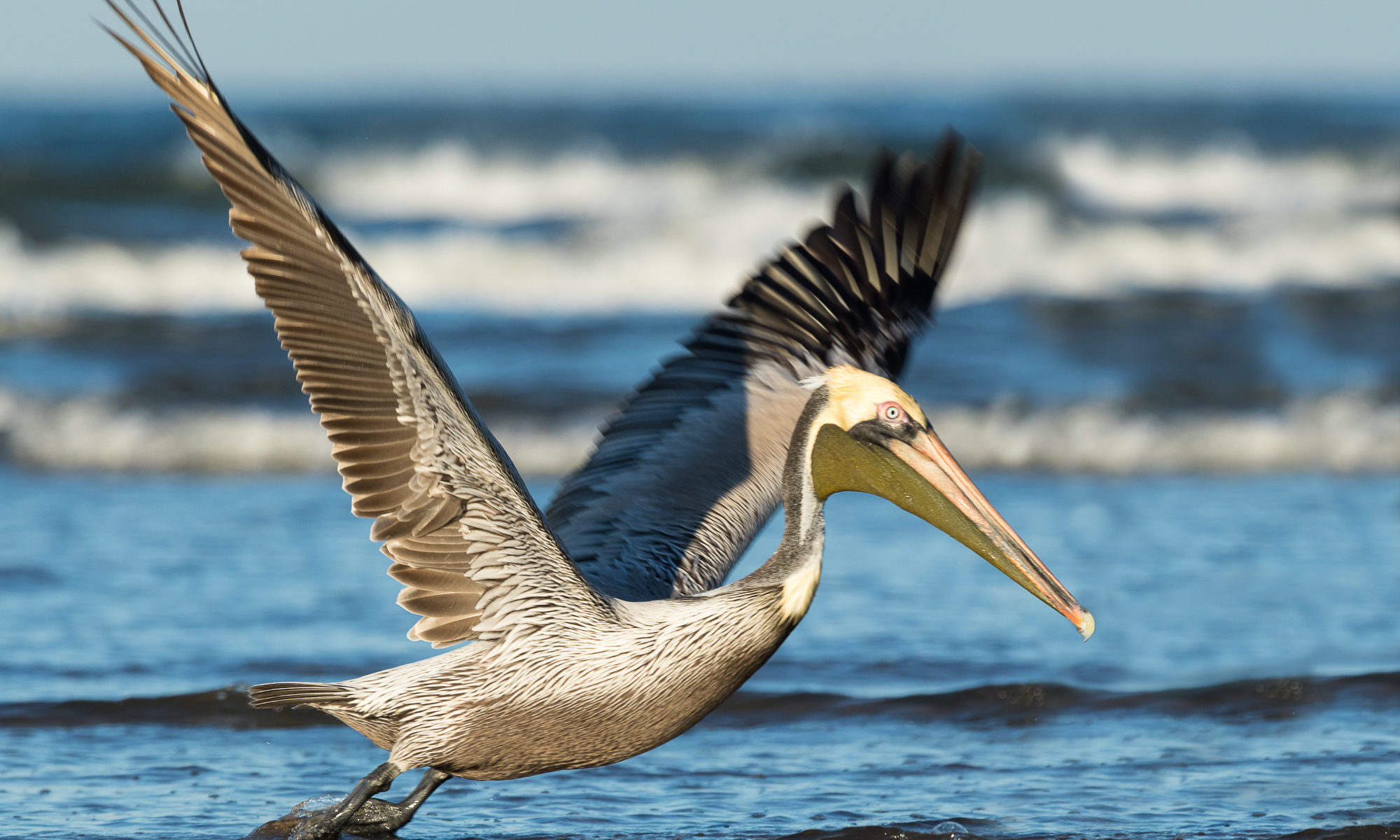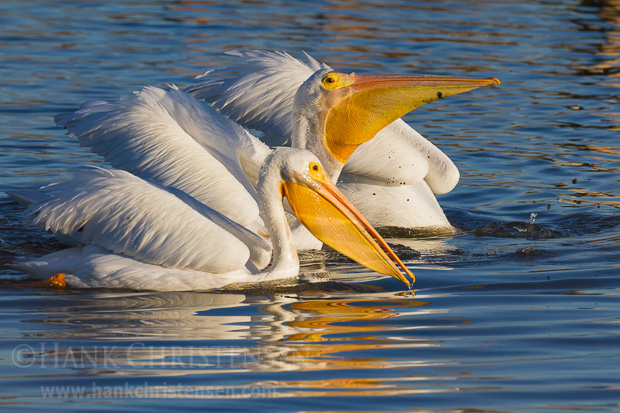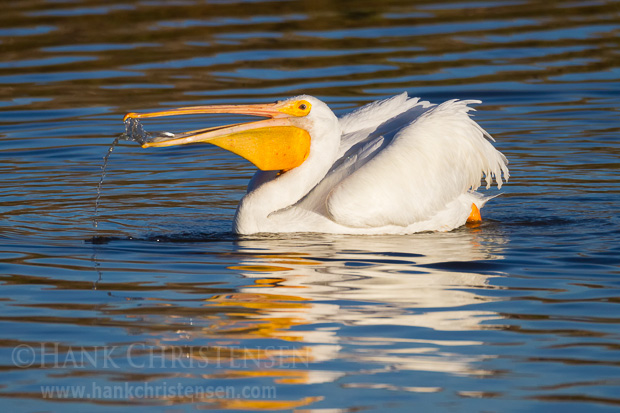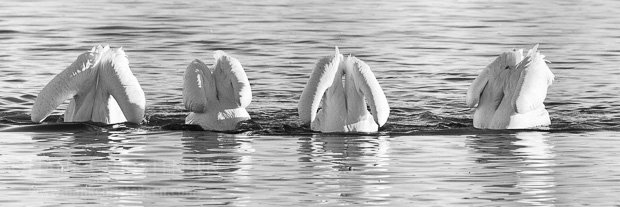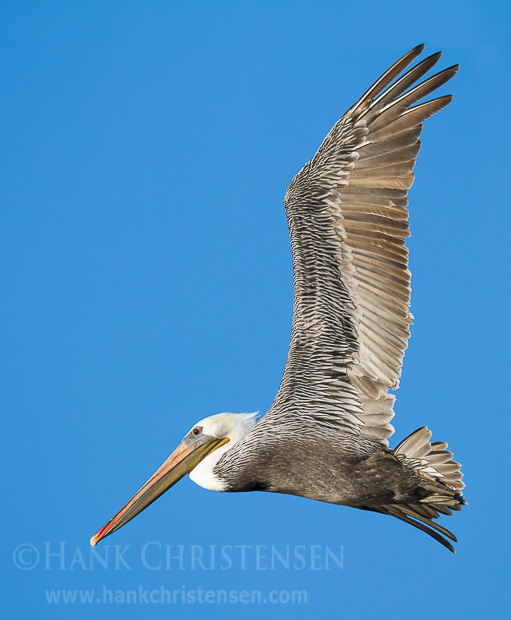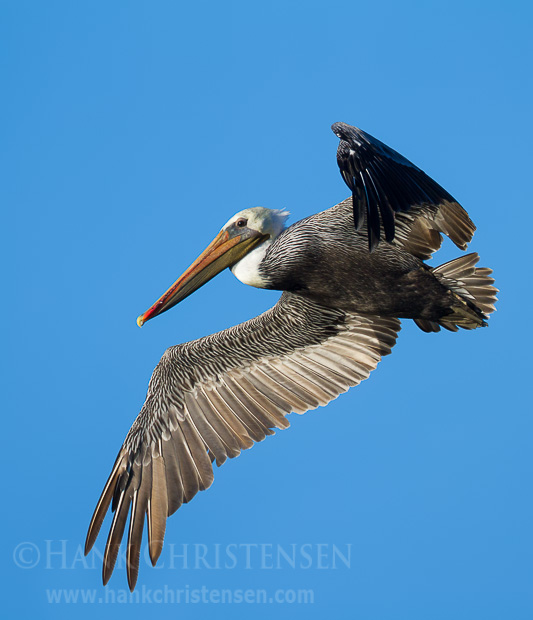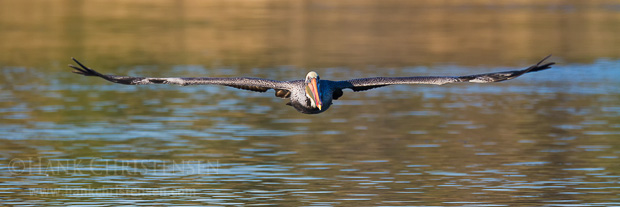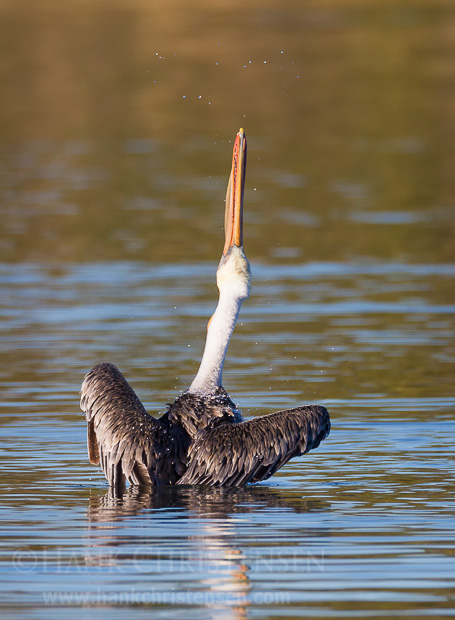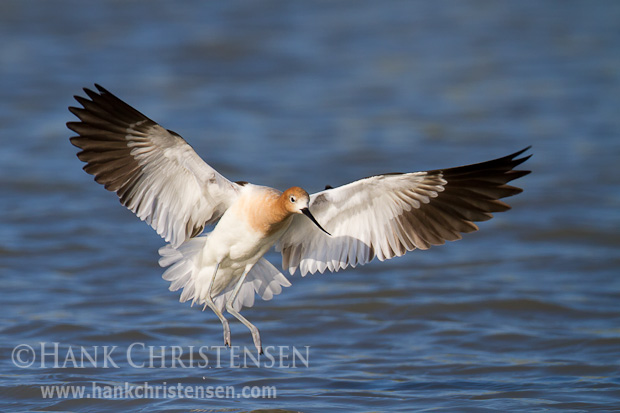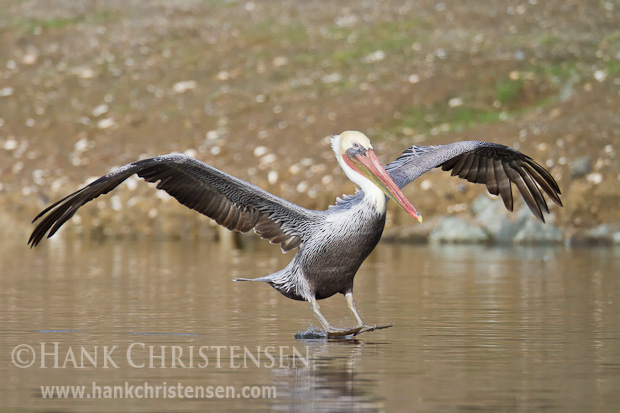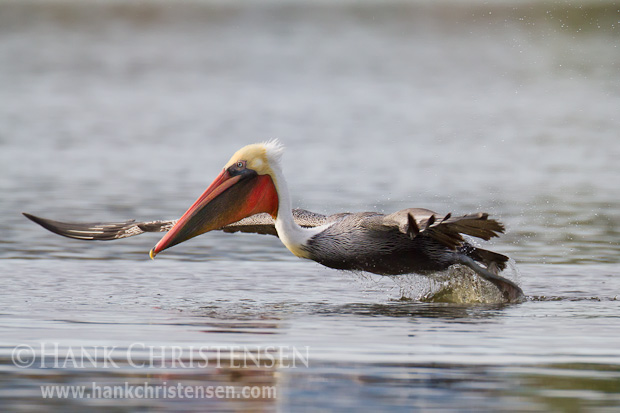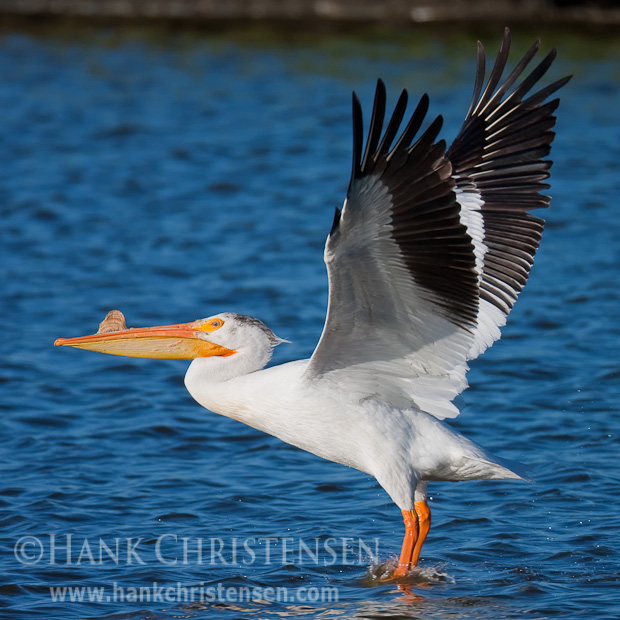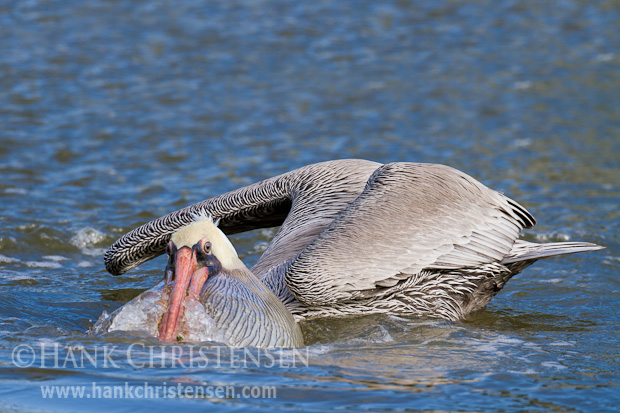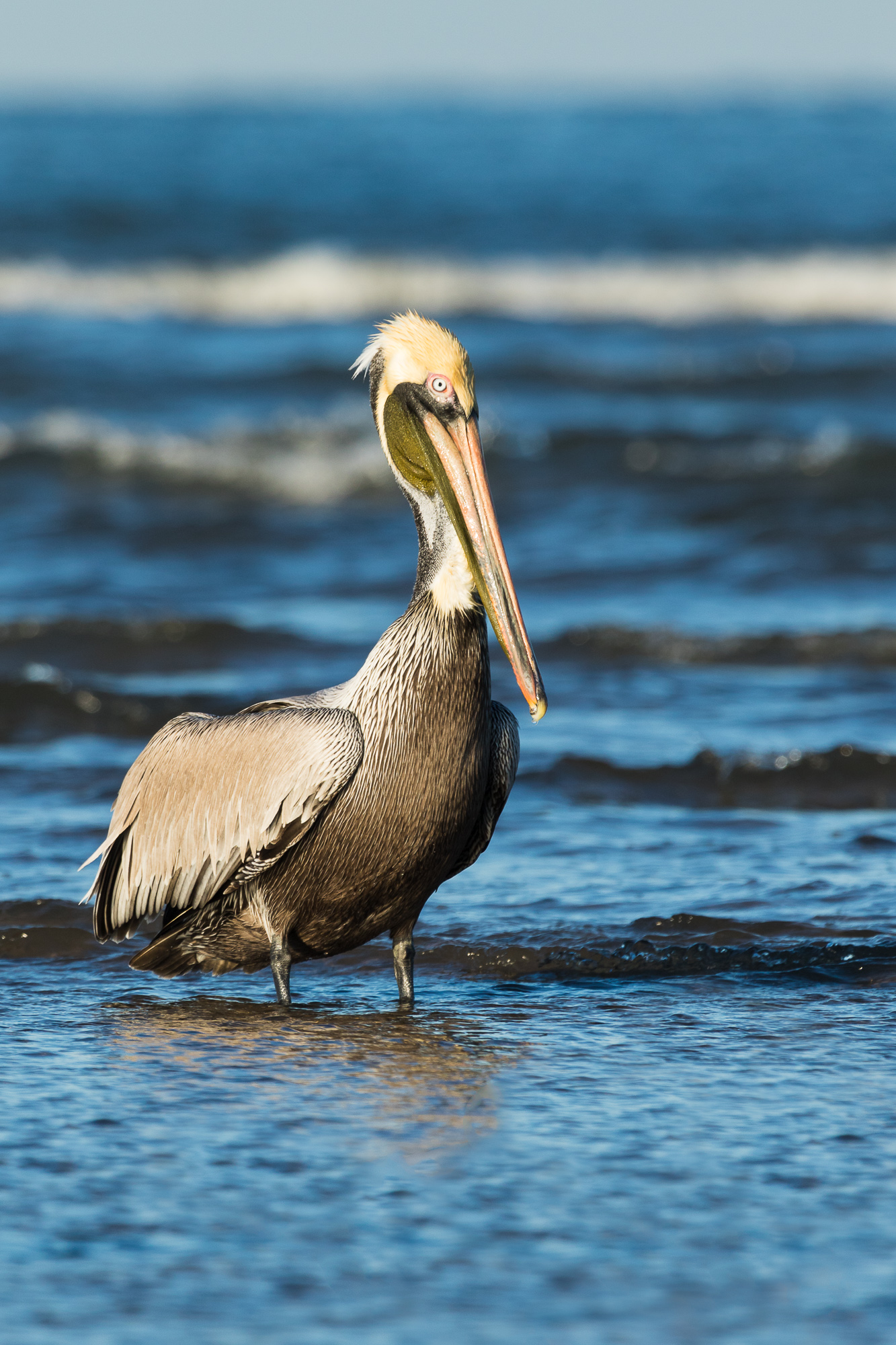
Finding the right place from which to photograph wildlife takes experience and patience. When arriving at a new location with the intention of photographing wildlife, I first scout the area very similar to how I’d scout for a landscape shot. In this case I’m looking for one place to hunker down that is likely to yeild a good variety of animals with great light.
In this instance, I found a low area of sand jutting out into the water, just inches above the high tide. As it was morning, the sun was at my back, and I could shoot birds wading in the water in three directions, all without moving. I kept still and tried to make very slow movements so as not to spook any subjects.
As I was shooting some smaller birds now coming quite close to me, a large brown pelican arrived on the scene, very close to me. I took the opportunity to get some portrait shots of this beautiful specimen while it was preening, and generally not paying me any attention. I don’t believe I would have been able to approach this bird this closely if I had been stalking it. But by remaining in one spot and being still, I created a space that seemed safe for a variety of birds to approach me.
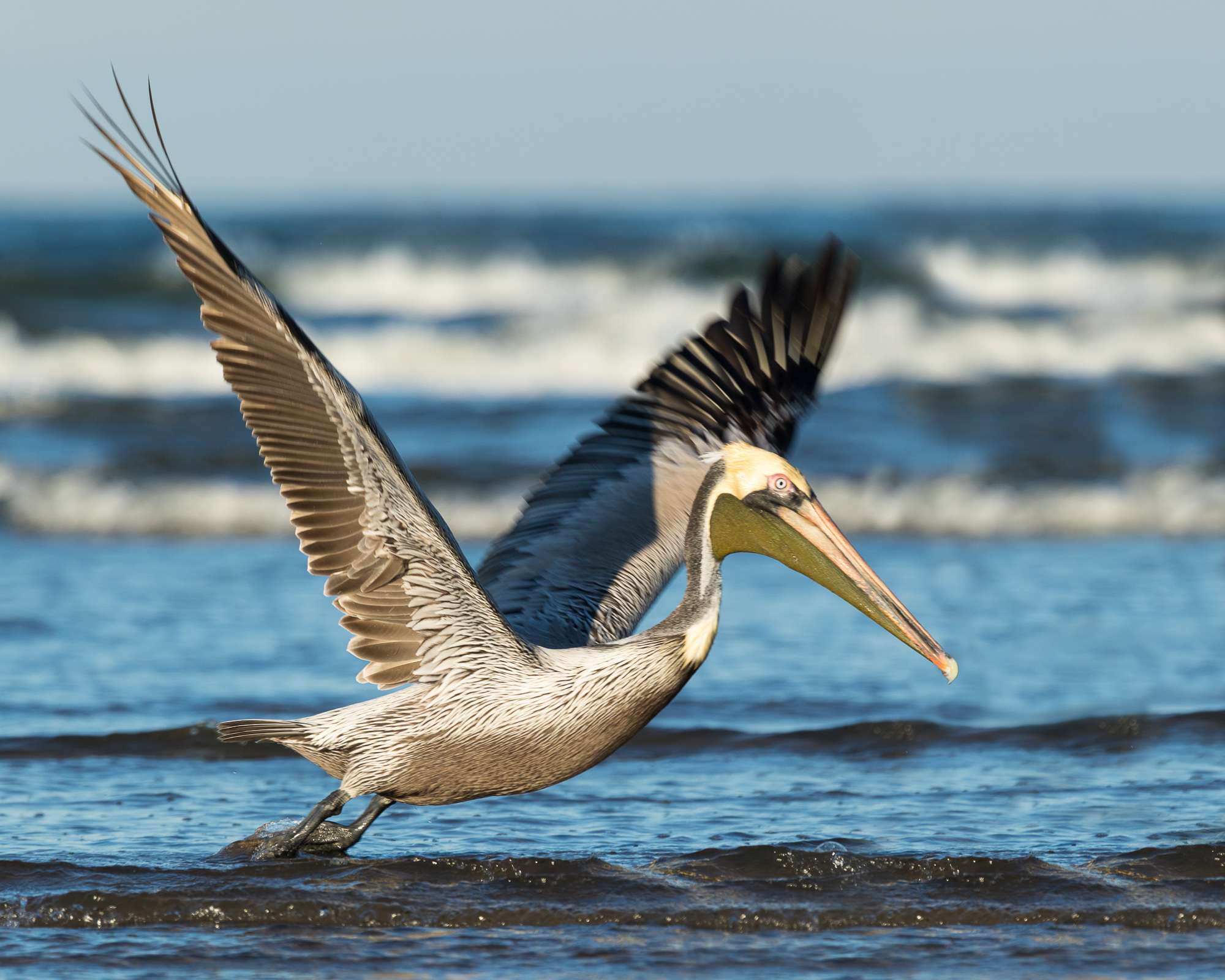
Unfortunately, this was not an isolated location, and soon other beach goers wandered by without any thought to disturbing wildlife. My only reaction was to prepare for the pelican’s inevitable takeoff, and make sure I captured it in camera.

